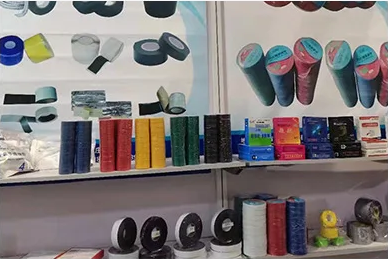The Cost of Butyl Rubber Tape An Overview
Butyl rubber tape is a versatile adhesive tape widely used in various industries for its excellent sealing properties, water resistance, and durability. This specialized tape is composed of butyl rubber, a synthetic rubber that exhibits remarkable adhesion to various surfaces and provides effective insulation against moisture and air infiltration. As demand for quality sealing solutions continues to rise, understanding the factors influencing butyl rubber tape prices becomes essential for consumers and businesses alike.
Factors Influencing Butyl Rubber Tape Prices
1. Raw Material Costs The price of butyl rubber itself is a significant determinant of the overall cost of butyl rubber tape. Fluctuations in the prices of crude oil, from which butyl rubber is derived, can directly impact tape prices. When crude oil prices increase, so too do the costs of producing butyl rubber, which can lead to higher tape prices in the market.
2. Manufacturing Processes The complexity of the manufacturing processes can also affect the price. High-quality butyl rubber tapes often undergo more rigorous production standards, which may include additional layers for enhanced performance or specialized formulations to increase the tape's resistance to temperature extremes and chemicals. These advanced manufacturing techniques typically lead to higher prices.
3. Quality and Performance Butyl rubber tapes come in various grades and formulations, each designed for specific applications. For instance, tapes designed for outdoor use may be UV resistant and capable of withstanding extreme weather conditions, thereby commanding higher prices than standard tapes. Consumers and businesses must consider the intended use of the tape when evaluating its price.
4. Packaging and Quantity The cost per roll of butyl rubber tape can vary significantly based on packaging and purchase quantity. Bulk purchases often come with discounts, leading to lower per-unit costs. Smaller quantities sold in retail packaging may be priced higher per roll due to the additional costs associated with retail distribution, including packaging, marketing, and store overhead.
butyl rubber tape price

5. Brand Reputation The manufacturer’s brand can also play a role in pricing. Established brands with a reputation for quality may charge a premium due to consumer trust and proven performance. Conversely, lesser-known brands might offer lower prices to attract customers but may not always meet the same standards of quality.
Market Trends and Price Projections
As industries increasingly focus on sustainability and durability, the demand for butyl rubber tape is likely to continue growing. This trend may mean that prices could experience an upward trajectory due to increased demand and potential supply chain constraints. Additionally, innovations in adhesive technology and formulations might also affect market prices, as manufacturers release new products that meet higher performance standards.
Consumers should stay informed about market trends, as fluctuations in raw materials and manufacturing processes can lead to sudden price changes. Collaborating with suppliers who provide transparent pricing and quality guarantees can help mitigate costs, ensuring that consumers receive the best value for their investment.
Conclusion
In conclusion, the price of butyl rubber tape is influenced by multiple factors, including raw material costs, manufacturing processes, quality, packaging, and brand reputation. As the demand for durable and efficient sealing solutions increases, it is essential for consumers and businesses to be aware of these factors to make informed purchasing decisions. By understanding the dynamics at play, buyers can navigate the market effectively and choose the right butyl rubber tape for their specific needs while managing costs efficiently.
-
XIANGFAN Rubber Tape-Ultimate Solutions for All Your Insulation NeedsNewsJun.24,2025
-
XIANGFAN Rubber Tape-Protection for Industrial and Residential ApplicationsNewsJun.24,2025
-
XIANGFAN Rubber Tape: Superior Safety and Sealing for Demanding EnvironmentsNewsJun.24,2025
-
XIANGFAN Rubber Tape: Reliable Solutions for Every Electrical ChallengeNewsJun.24,2025
-
XIANGFAN Electrical & Industrial Tape: Powering Reliability Across IndustriesNewsJun.24,2025
-
XIANGFAN Electrical & Industrial Tape: Excellence in Every ApplicationNewsJun.24,2025
